-
 Bitcoin
Bitcoin $107,443.3008
-1.17% -
 Ethereum
Ethereum $2,494.2503
-0.63% -
 Tether USDt
Tether USDt $1.0003
0.00% -
 XRP
XRP $2.2496
2.23% -
 BNB
BNB $658.7569
0.63% -
 Solana
Solana $154.9826
1.94% -
 USDC
USDC $1.0000
0.01% -
 TRON
TRON $0.2799
1.07% -
 Dogecoin
Dogecoin $0.1659
-1.78% -
 Cardano
Cardano $0.5745
0.25% -
 Hyperliquid
Hyperliquid $39.7005
0.13% -
 Bitcoin Cash
Bitcoin Cash $519.5989
3.78% -
 Sui
Sui $2.7874
-2.40% -
 Chainlink
Chainlink $13.3762
-1.69% -
 UNUS SED LEO
UNUS SED LEO $9.0784
-0.64% -
 Avalanche
Avalanche $17.9846
-2.81% -
 Stellar
Stellar $0.2390
-0.06% -
 Toncoin
Toncoin $2.9028
0.25% -
 Shiba Inu
Shiba Inu $0.0...01147
-2.17% -
 Litecoin
Litecoin $86.6956
-1.27% -
 Hedera
Hedera $0.1508
-0.50% -
 Monero
Monero $322.6222
3.26% -
 Polkadot
Polkadot $3.4124
-2.99% -
 Dai
Dai $0.9999
0.00% -
 Bitget Token
Bitget Token $4.5434
-1.97% -
 Ethena USDe
Ethena USDe $1.0002
0.00% -
 Uniswap
Uniswap $7.1562
-2.61% -
 Aave
Aave $275.8830
-1.02% -
 Pepe
Pepe $0.0...09790
-4.04% -
 Pi
Pi $0.5018
-5.09%
Is a pullback after breaking through the annual line with large volume an opportunity?
A breakout above the 200-day moving average with high volume often signals a potential trend reversal or continuation in crypto markets, offering strategic entry points during pullbacks.
Jul 01, 2025 at 12:01 am

Understanding the Annual Line in Cryptocurrency Trading
In technical analysis, the annual line typically refers to the 200-day moving average (200DMA), a widely used indicator among traders and investors. This line is considered a critical support or resistance level that reflects long-term market sentiment. In the cryptocurrency market, where volatility is pronounced, breaking through the 200DMA with significant volume often signals a potential trend reversal or continuation.
When a cryptocurrency's price crosses above the annual line on high trading volume, it indicates strong buying pressure from institutional and retail participants. However, such breakouts are not always sustainable. A pullback, which is a temporary decline after a breakout, can occur due to profit-taking or hesitation among traders. The key question is whether this pullback presents a strategic entry opportunity.
Why Volume Matters During a Breakout
Volume plays a crucial role in confirming the validity of a breakout. A breakout accompanied by large trading volume suggests genuine market participation and conviction behind the move. In contrast, a breakout on low volume may lack sustainability and could result in a false signal.
For example, if Bitcoin breaks above its 200DMA with volume significantly higher than the 50-day average, it implies that new buyers are entering the market. This scenario increases the likelihood that the asset will continue its upward trajectory after a short consolidation phase. Traders should monitor on-chain data platforms like Glassnode or CoinMarketCap to verify volume spikes during such events.
Analyzing Pullbacks After a Valid Breakout
A pullback after a valid breakout doesn't necessarily invalidate the new trend. Instead, it can be seen as a natural retracement within the broader context of price action. Many experienced traders view these dips as opportunities to enter at better prices.
To assess whether a pullback is a buying opportunity, consider the following:
- Fibonacci Retracement Levels: Use Fibonacci levels to identify potential support zones during the pullback.
- Moving Average Convergence: Observe how price interacts with key moving averages like the 50-day or 100-day MA.
- RSI and MACD Indicators: Check momentum indicators to determine if the asset is oversold or still showing bullish divergence.
These tools help distinguish between a healthy correction and a failed breakout.
How to Trade the Pullback: Step-by-Step Approach
If you're considering entering a position during a pullback after a large-volume breakout above the annual line, follow this detailed process:
- Identify the breakout candle and confirm that it closed above the 200DMA with substantial volume.
- Wait for a clear pullback pattern to form — this can be a flag, pennant, or simple retest of the broken level.
- Look for confluence with other technical indicators such as RSI dipping below 50 or a bullish MACD crossover.
- Place a buy order slightly above the recent swing low or near a key support level identified via trendlines or Fibonacci.
- Set a stop-loss just below the lowest point of the pullback to manage risk effectively.
- Target a risk-reward ratio of at least 2:1 when setting your take-profit level.
This structured approach ensures that trades are based on both technical confirmation and sound risk management principles.
Case Study: Ethereum’s 2023 Breakout and Subsequent Pullback
In mid-2023, Ethereum broke above its 200DMA with a surge in volume driven by positive news around ETF approvals and network upgrades. Shortly after, the price pulled back nearly 15% over two weeks before resuming its uptrend.
Traders who entered during the pullback using the strategies outlined above were able to capture substantial gains. Notably, Ethereum found support near the 50-day MA and showed strong RSI divergence during the dip. This case illustrates how combining volume, moving averages, and momentum indicators can lead to successful entries during pullbacks.
It's important to note that no strategy guarantees success. Market conditions can change rapidly due to macroeconomic factors, regulatory developments, or sudden shifts in investor sentiment. Therefore, even in seemingly favorable setups, maintaining strict risk control is essential.
Frequently Asked Questions
Q: What is considered "large volume" during a breakout?
Large volume during a breakout is typically defined as trading activity that exceeds the average daily volume over the past 30 to 50 days by a significant margin — usually 2x or more. It's also useful to compare it with previous breakout attempts to gauge strength.
Q: Can pullbacks happen multiple times after a breakout?
Yes, especially in highly volatile markets like cryptocurrencies. After an initial pullback, price can revisit the area again before continuing the trend. These retests can offer additional entry points if confirmed by volume and indicators.
Q: Should I use leverage when entering during a pullback?
Using leverage during a pullback increases risk significantly. Since pullbacks can extend further than expected, it's generally safer to trade with conservative position sizing and avoid excessive leverage unless you have a robust risk management system in place.
Q: How do I differentiate between a pullback and a reversal?
A pullback typically occurs within the context of a larger trend and shows signs of price finding support near key levels. A reversal, on the other hand, often involves a breakdown below critical support, bearish candlestick patterns, and negative divergences in momentum indicators.
Disclaimer:info@kdj.com
The information provided is not trading advice. kdj.com does not assume any responsibility for any investments made based on the information provided in this article. Cryptocurrencies are highly volatile and it is highly recommended that you invest with caution after thorough research!
If you believe that the content used on this website infringes your copyright, please contact us immediately (info@kdj.com) and we will delete it promptly.
- Bitcoin, Bitfinex, and Acceleration: Decoding the Crypto Crossroads
- 2025-07-01 12:50:11
- SOL, XRP, LTC ETFs: Are We on the Cusp of Crypto History?
- 2025-07-01 12:50:11
- BNB Chain's Maxwell Upgrade: Sub-Second Blocks and a Whole Lotta Speed!
- 2025-07-01 13:10:12
- Bitcoin, Ethereum, Crypto Decline? Nah, Just a New York Minute!
- 2025-07-01 13:10:12
- Coinpass: The Gold-Standard Crypto Platform for UK Businesses
- 2025-07-01 12:30:12
- Tokenized ETFs, Robinhood, and Europe: A New Era of Finance?
- 2025-07-01 12:30:12
Related knowledge
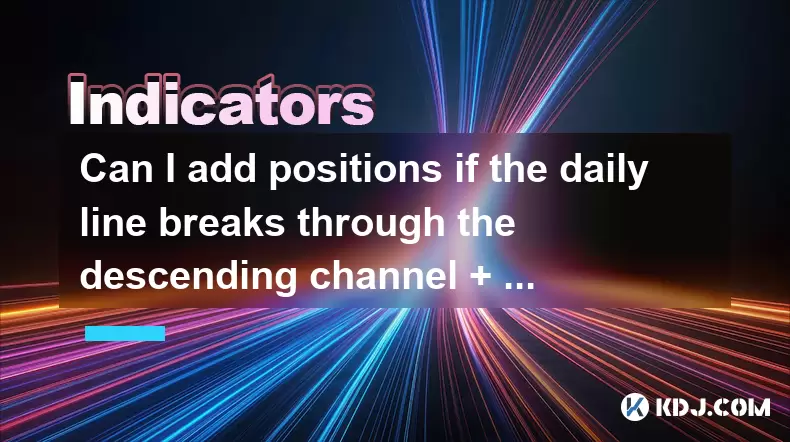
Can I add positions if the daily line breaks through the descending channel + the 30-minute moving average is in a bullish arrangement?
Jun 30,2025 at 11:00pm
Understanding the Descending Channel BreakoutWhen a daily line breaks through a descending channel, it indicates a potential shift in market sentiment from bearish to bullish. A descending channel is formed by drawing two parallel trendlines, where the upper trendline connects the lower highs and the lower trendline connects the lower lows. A breakout o...
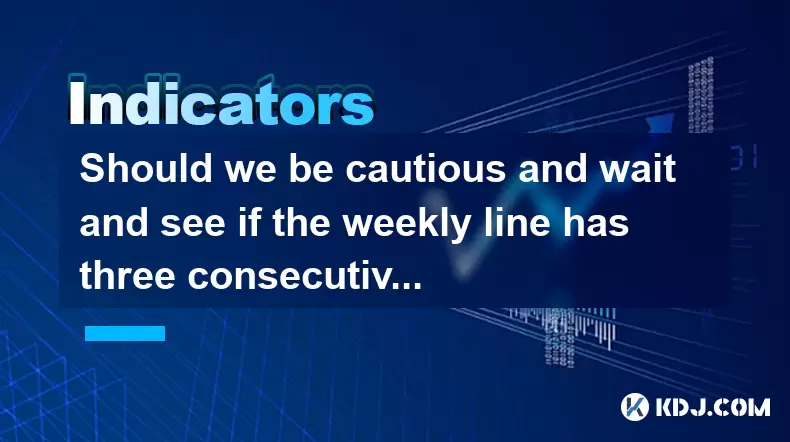
Should we be cautious and wait and see if the weekly line has three consecutive Yin lines + the daily MACD green column enlarges?
Jul 01,2025 at 12:42am
Understanding the Weekly Three Consecutive Yin Lines PatternIn technical analysis, three consecutive Yin lines on a weekly chart indicate a strong bearish trend. Each Yin line represents a week where the closing price is lower than the opening price, signaling consistent selling pressure. When this pattern appears three times in succession, it often sug...
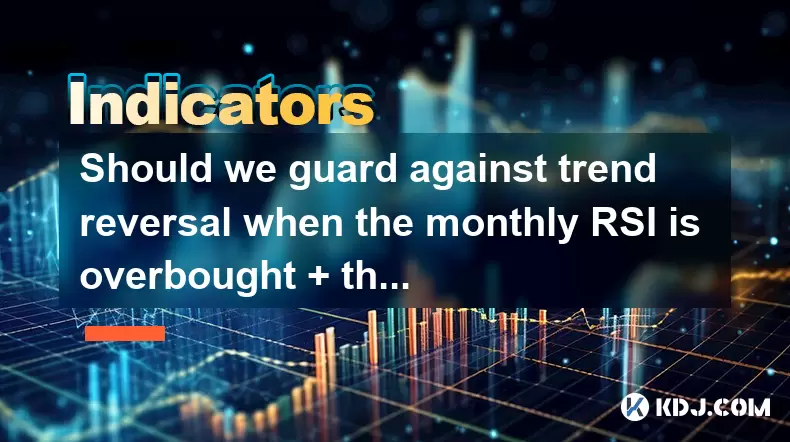
Should we guard against trend reversal when the monthly RSI is overbought + the weekly line has a long upper shadow?
Jun 30,2025 at 11:35pm
Understanding RSI Overbought Conditions in CryptocurrencyThe Relative Strength Index (RSI) is a momentum oscillator commonly used in technical analysis to identify overbought or oversold conditions in an asset. When the monthly RSI of a cryptocurrency reaches above 70, it is generally considered overbought, suggesting that the asset may be due for a pul...
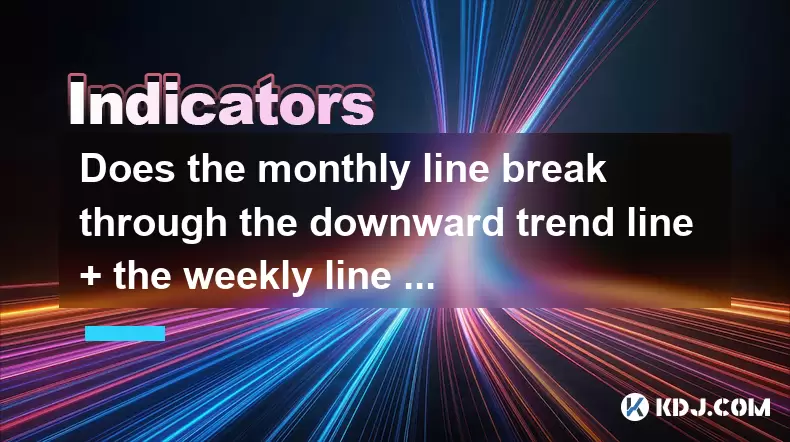
Does the monthly line break through the downward trend line + the weekly line with large volume confirm the reversal?
Jul 01,2025 at 04:49am
Understanding the Monthly Line Breakthrough in CryptocurrencyIn cryptocurrency trading, a monthly line refers to the price movement over a 30-day period represented on a candlestick chart. When this monthly line breaks through a downward trend line, it suggests that the long-term bearish momentum might be weakening. A downward trend line is drawn by con...
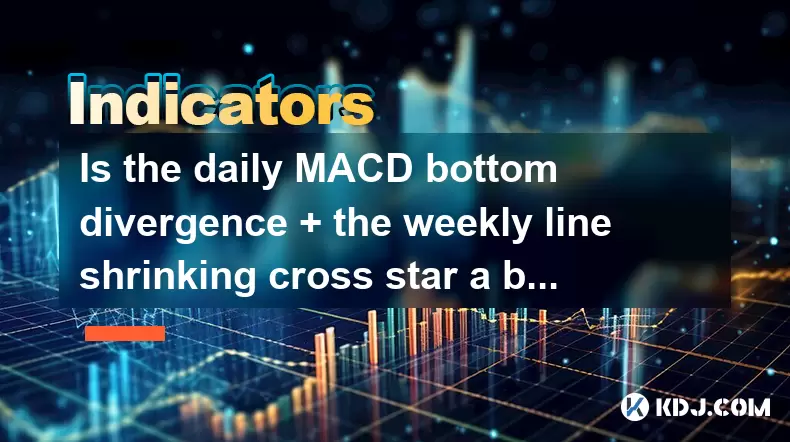
Is the daily MACD bottom divergence + the weekly line shrinking cross star a bottoming signal?
Jul 01,2025 at 03:49am
Understanding MACD Bottom Divergence in Cryptocurrency TradingThe Moving Average Convergence Divergence (MACD) is a widely used technical indicator among cryptocurrency traders to identify potential trend reversals. A bottom divergence occurs when the price of an asset makes a lower low, but the MACD line forms a higher low. This suggests that bearish m...
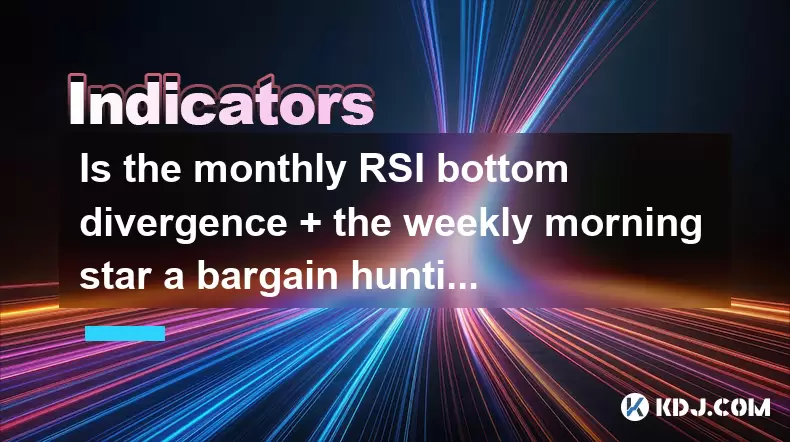
Is the monthly RSI bottom divergence + the weekly morning star a bargain hunting opportunity?
Jun 30,2025 at 09:57pm
Understanding RSI Bottom Divergence in Monthly TimeframesThe Relative Strength Index (RSI) is a momentum oscillator commonly used to identify overbought or oversold conditions in the market. When traders refer to a monthly RSI bottom divergence, they're observing a situation where the price makes a lower low, but the RSI makes a higher low on the monthl...

Can I add positions if the daily line breaks through the descending channel + the 30-minute moving average is in a bullish arrangement?
Jun 30,2025 at 11:00pm
Understanding the Descending Channel BreakoutWhen a daily line breaks through a descending channel, it indicates a potential shift in market sentiment from bearish to bullish. A descending channel is formed by drawing two parallel trendlines, where the upper trendline connects the lower highs and the lower trendline connects the lower lows. A breakout o...

Should we be cautious and wait and see if the weekly line has three consecutive Yin lines + the daily MACD green column enlarges?
Jul 01,2025 at 12:42am
Understanding the Weekly Three Consecutive Yin Lines PatternIn technical analysis, three consecutive Yin lines on a weekly chart indicate a strong bearish trend. Each Yin line represents a week where the closing price is lower than the opening price, signaling consistent selling pressure. When this pattern appears three times in succession, it often sug...

Should we guard against trend reversal when the monthly RSI is overbought + the weekly line has a long upper shadow?
Jun 30,2025 at 11:35pm
Understanding RSI Overbought Conditions in CryptocurrencyThe Relative Strength Index (RSI) is a momentum oscillator commonly used in technical analysis to identify overbought or oversold conditions in an asset. When the monthly RSI of a cryptocurrency reaches above 70, it is generally considered overbought, suggesting that the asset may be due for a pul...

Does the monthly line break through the downward trend line + the weekly line with large volume confirm the reversal?
Jul 01,2025 at 04:49am
Understanding the Monthly Line Breakthrough in CryptocurrencyIn cryptocurrency trading, a monthly line refers to the price movement over a 30-day period represented on a candlestick chart. When this monthly line breaks through a downward trend line, it suggests that the long-term bearish momentum might be weakening. A downward trend line is drawn by con...

Is the daily MACD bottom divergence + the weekly line shrinking cross star a bottoming signal?
Jul 01,2025 at 03:49am
Understanding MACD Bottom Divergence in Cryptocurrency TradingThe Moving Average Convergence Divergence (MACD) is a widely used technical indicator among cryptocurrency traders to identify potential trend reversals. A bottom divergence occurs when the price of an asset makes a lower low, but the MACD line forms a higher low. This suggests that bearish m...

Is the monthly RSI bottom divergence + the weekly morning star a bargain hunting opportunity?
Jun 30,2025 at 09:57pm
Understanding RSI Bottom Divergence in Monthly TimeframesThe Relative Strength Index (RSI) is a momentum oscillator commonly used to identify overbought or oversold conditions in the market. When traders refer to a monthly RSI bottom divergence, they're observing a situation where the price makes a lower low, but the RSI makes a higher low on the monthl...
See all articles

























































































